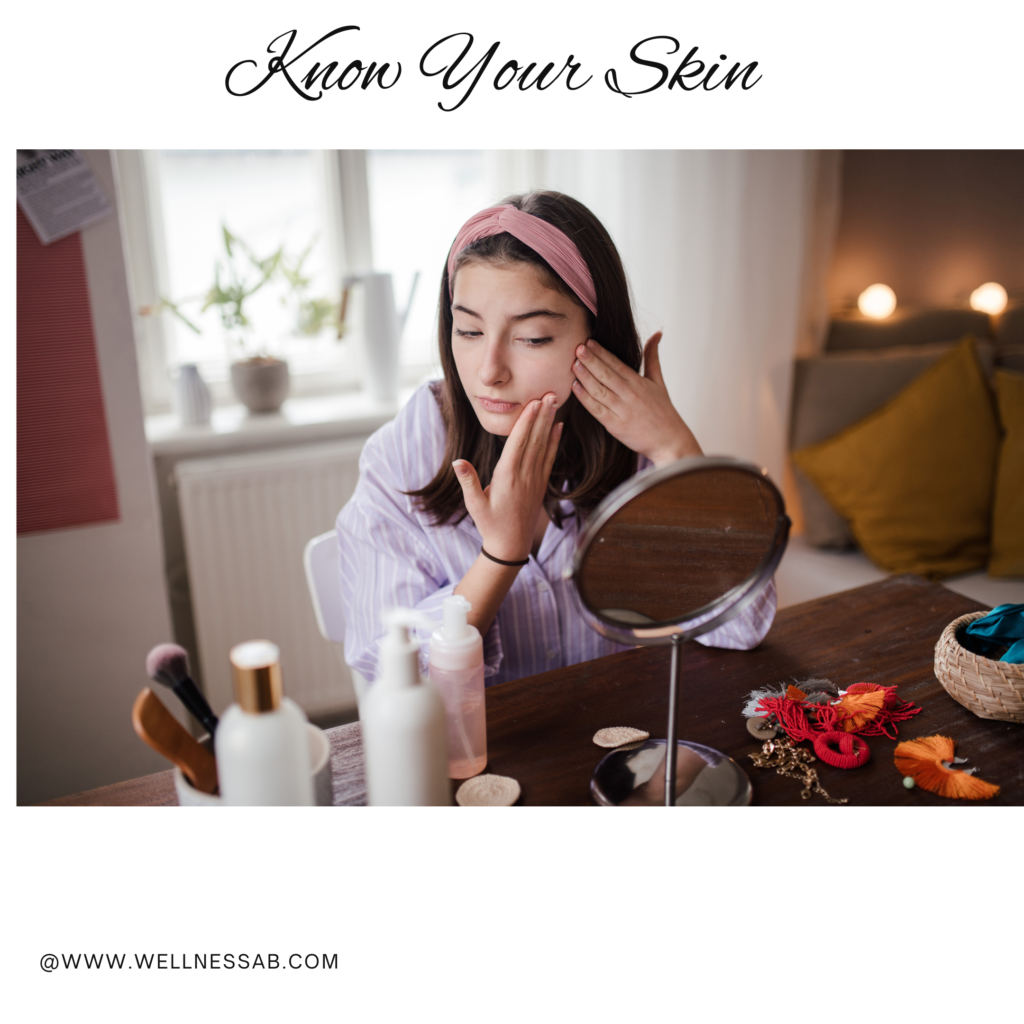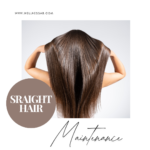
Table of Contents
How to Identify Your Skin Type
Understanding your skin type is the first step towards creating an effective skincare routine tailored to your needs. Knowing whether your skin is oily, dry, combination, normal, or sensitive helps you choose the right products and treatments, ensuring your skin remains healthy and vibrant. Here’s a comprehensive guide to help you identify your skin type.
Step 1: Cleanse Your Face
Start with a clean slate. Wash your face with a gentle cleanser to remove any makeup, dirt, and oils that can be there on your skin. Pat your skin dry with a soft towel. Avoid applying any additional products immediately after cleansing.
Step 2: Wait and Observe
Allow your skin to return to its natural state by waiting for about an hour. During this time, avoid touching your face. This waiting period helps your skin reveal its true characteristics without the influence of external products.
Step 3: Examine Your Skin
After an hour, examine your skin in a well-lit area. Focus on the following areas: forehead, nose, chin (T-zone), and cheeks. Use a mirror to closely observe any signs of oiliness, dryness, or sensitivity
Step 4: Conduct the Blotting Paper Test
To get a more precise understanding , use blotting papers:
- Take a few blotting papers and gently press them on different areas of your face: forehead, nose, chin, and cheeks.
- Check the blotting papers for oil residue that might be there on your skin.
Skin Type Characteristics
Based on your observations and the blotting paper test, here’s how you can identify your skin type:
- Normal Skin
- Characteristics: Skin feels balanced, not too oily or dry.
- Blotting Paper Test: Little to no oil residue.
- Appearance: Pores are small and barely visible, skin feels smooth and even.
- Oily Skin
- Characteristics: Skin feels greasy, especially in the T-zone area.
- Blotting Paper Test: Significant oil residue, especially from the T-zone.
- Appearance: Pores are enlarged and more visible, prone to blackheads and acne.
- Dry Skin
- Characteristics: Feels tight, rough, or flaky.
- Blotting Paper Test: Little to no oil residue.
- Appearance: Pores are small and less visible, skin may appear dull and show fine lines.
- Combination Skin
- Characteristics: Oily skin in the T-zone and dry or normal skin on the cheeks.
- Blotting Paper Test: Oil residue in the T-zone but not on the cheeks.
- Appearance: Pores are larger in the T-zone and smaller on the cheeks.
- Sensitive Skin
- Characteristics: Skin gets easily irritated, prone to redness, itching, or burning.
- Blotting Paper Test: Varies, can be dry or oily depending on the individual.
- Appearance: Redness, dry patches, or visible irritation. on the skin surface.
Additional Tips for Identifying Your Skin Type
Observe Your Skin Throughout the Day: Pay attention to how your skin feels from morning to evening. Does it get shinier or drier as the day progresses?
Seasonal Changes: Notice if your skin type changes with the seasons. Some people may experience oilier skin in the summer and drier skin in the winter.
Reaction to Products: Take note of how your skin reacts to different skincare products. This can provide clues about your skin’s sensitivity and needs.
Conclusion
Identifying your skin type is crucial for tailoring a skincare routine that meets your specific needs. By following these steps and understanding the characteristics of each skin type, you can better care for your skin and maintain its health and radiance. Remember, your skin may change over time due to factors like age, environment, and lifestyle, so it’s essential to reassess your skin type periodically. Proper identification empowers you to make informed choices, ensuring your skin stays balanced, healthy, and glowing. With the right knowledge, you can always achieve a complexion which will not only look good but will feel great too. Always listen to your skin demands and adjust your routine as needed.












1 thought on “Guide to Identify Your Skin Type: Oily, Dry, Normal, Combination, Sensitive”